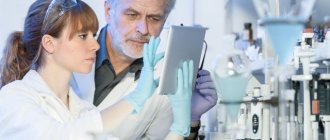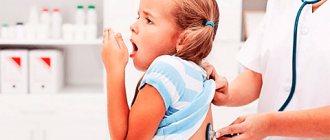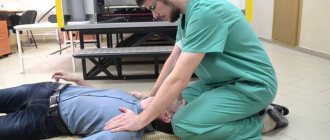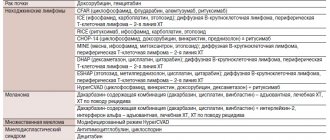Kawasaki disease - what is it? Symptoms and treatment
Kawasaki disease (Kawasaki syndrome, mucocutaneous lymphatic syndrome) belongs to a group of diseases called systemic vasculitis. Diseases in this group cause abnormal damage by cells of the immune system to blood vessels, most often medium- and small-sized arteries and veins. In the case of Kawasaki syndrome, it can cause damage to children's coronary arteries - the vessels that carry oxygen-rich blood and nutrients to the heart.
In addition to the coronary arteries, the inflammatory process can affect the pericardium, which surrounds the heart, as well as endocardial tissue (the inside of the heart), and even the heart muscle itself.
Kawasaki disease most often affects children, usually under 5 years of age. Older children and adults are rarely exposed to it. The peak incidence occurs between the ages of 1 and 2 years, and boys are more often affected.
Causes
Currently, rheumatology does not have clear data on the causes of Kawasaki disease.
The most accepted theory is the assumption that Kawasaki disease develops against the background of a hereditary predisposition under the influence of infectious agents of a bacterial (streptococcus, staphylococcus, rickettsia) or viral (Epstein-Barr virus, herpes simplex, parvoviruses, retroviruses) nature.
A hereditary predisposition to Kawasaki disease is supported by the connection of the disease with race, its spread in other countries mainly among Japanese emigrants, and the development of the disease in 8-9% of the descendants of those who have recovered from the disease.
Symptoms and complications
The disease begins with a temperature, usually above 38.9°C . A child with Kawasaki disease also becomes irritable and sleepy.
Sometimes children experience abdominal cramps. After a few days, they develop a rash that can appear anywhere. The rash does not have a specific pattern and may not last long. The white part of the eyes turns red, although there is no discharge.
Sufferers may also have cracked, dry, red lips and a red tongue with enlarged papillae that may look a little like strawberries. Patients' hands and feet often become swollen and red or purple-red.
Peeling may also occur, especially on the fingers and toes (usually the top of the nail). Often the lymph nodes (especially in the neck) become swollen.
Kawasaki disease is dangerous because up to 20% of children with the disease have heart complications, although it very rarely causes heart attack and sudden death. Complications include pathological dilation of the coronary arteries, aneurysm, pericarditis and myocarditis.
Other complications include inflammation of the tissues around the brain, joints, and gallbladder. The inside of the eye may also become inflamed. All of these and other complications are usually treated and do not leave any permanent damage.
Symptoms of Kawasaki disease
The most striking symptom of Kawasaki disease syndrome in children (see photo) is fever that lasts longer than 5 days. Also observed with KS:
- increase in the size of the cervical lymph node;
- swelling of the tongue;
- acquisition of a scarlet hue by the tongue;
- redness of lips;
- cracks on the lips;
- rash of a polymorphic nature, localized on any part of the body;
About 2 weeks after the onset of the fever, your child may develop lumps with flaky skin on the palms of the hands or soles of the feet.
During the pathology, three stages are distinguished, cyclically replacing each other:
- The acute stage lasts two weeks and is manifested by fever, symptoms of asthenia and intoxication. An inflammatory process develops in the myocardium, it weakens and ceases to function.
- The subacute stage is manifested by thrombocytosis in the blood and symptoms of cardiac disorders - systolic murmur, muffled heart sounds, arrhythmia.
- Recovery occurs by the end of the second month of the disease: all symptoms of the pathology disappear and the general blood test indicators normalize.
Kawasaki syndrome in adults is characterized by inflammation of the coronary vessels, which cease to be elastic and swell in some areas. The disease leads to early atherosclerosis, calcification, thrombus formation, myocardial dystrophy and infarction. In young people, aneurysms become smaller over time and may disappear permanently.
Patients complain of heart pain, tachycardia, arthralgia, vomiting, and diarrhea. In more rare cases, symptoms of meningitis, cholecystitis and urethritis, cardiomegaly, and hepatomegaly are noted.
The doctor explained Kawasaki syndrome in children with coronavirus
Some scientists associate the Kawasaki phenomenon with COVID-19, while others suggest that the manifestations of this syndrome are a consequence of the cancellation of routine vaccinations in children due to the pandemic. What do Russian experts think about this? What causes this Kawasaki syndrome? And how relevant is this problem for Russia?
MK’s questions are answered by the head of the department of diagnostics and rehabilitation treatment, head of the Center for Infectious Diseases of the Federal State Institution “National Medical Research Center for Children's Health” of the Ministry of Health of Russia, Doctor of Medical Sciences, Professor Maya BAKRADZE.
Photo: medq.ru
“At least five signs should alert you”
“This hyperinflammatory syndrome in children is an extremely rare phenomenon and the background against which it occurs is still unknown,” explained Maya Dzhemalovna. — In essence, it is a systemic vasculitis with predominant damage to medium and small arteries, which leads to the development of aneurysms and the formation of blood clots. Kawasaki syndrome was first identified and described in Japan in 1967. The name was given to it by the Japanese doctor Tomisaku Kawasaki; for a long time he observed and treated children who exhibited these symptoms.
— And what symptoms are most characteristic of this syndrome? How to distinguish it from other manifestations of diseases? After all, a rash on the body and high fever are characteristic of many childhood pathologies...
“There are many other, more serious signs of this disease that must be taken into account when making a diagnosis. At least five signs should alert you: high temperature (up to 40°C and above); changes in the eyes (scleritis); rash; peripheral edema (hands and feet); bright raspberry tongue; lymphadenitis (enlarged lymph nodes, especially cervical ones), often unilateral. The main difficulty in diagnosing this syndrome is that all 5 signs rarely appear: more often, a combination of two or three. But in all cases, it is necessary to urgently begin treatment in order to eliminate inflammation of the coronary arteries and the formation of blood clots by the 10th day of the disease. And these are risk factors for myocardial infarction and death.
- And this is for small children? Are there any effective medications against this mysterious Kawasaki?
— Yes, up to 90% of those admitted with this syndrome are children under 5 years old. The risk of severe consequences in most of them can be prevented if large doses of immunoglobulin are administered intravenously in time in combination with acetylsalicylic acid. But the problem is that often the symptoms are erased. And so far no one in the world has been able to establish a single cause of the disease. To this day, research is being conducted in different countries to determine the source of the disease in children. But a scientific substantiation of the reasons for the appearance of this “strange” syndrome has not yet been found.
Even American colleagues, in their studies of new cases of Kawasaki syndrome during the COVID-19 pandemic, divided patients into two groups: children who developed Kawasaki syndrome after a previous covid infection, and children who developed the syndrome independently, even without contact with the new coronavirus infection.
— Still, viruses are to blame for this? So, maybe the reason for the increase in Kawasaki syndrome in children in Europe was COVID-19? After all, this factor began to be identified more often during the pandemic and mainly in patients with coronavirus?
— There is no proven data yet. Whether they are viruses, bacteria or other pathogens is not known for certain to the global medical community. Unfortunately, no one has yet proven how this hyperinflammatory syndrome occurs.
— Or maybe the reason is that now, due to the pandemic, children have temporarily stopped receiving routine vaccinations, for example, against chickenpox. And has this caused the rise of Kawasaki syndrome?
— A temporary suspension of vaccination cannot provoke the development of such a syndrome, because this year the immunization of children in the world has not been carried out for only a month or two, in Russia - for one month. This is not enough for the child’s body to react in this way. At least a year must pass.
“COVID-19 acts as a trigger”
— Maya Dzhemalovna, are children with coronavirus currently being treated in your clinic? How is their recovery going? Are there any patients with dangerous Kawasaki syndrome among them?
“Fortunately, there are no children with this syndrome in our clinic. And with a suspected or confirmed diagnosis of COVID-19, about 400 children were admitted to us for treatment (since April 21). To date, approximately half of the young patients have been discharged. Today there are 150 such children in the clinic, 20 of them are in more serious condition. But there are medicines, the treatment regimen proposed by the Ministry of Health gives positive results.
The clinical guidelines approved in 2021 by the Russian Ministry of Health regarding “Mucocutaneous lymphonodular Kawasaki syndrome in children” state: “In Russia, Kawasaki syndrome is being diagnosed more and more often, but often at a later date, as a result of which treatment is prescribed untimely and not always adequately. According to an epidemiological study conducted in the Irkutsk region from 2005 to 2009, the average incidence rate was 2.7 per 100 thousand children aged 0–17 years and 6.6 per 100 thousand children under 5 years of age, while the authors admit that these figures may be underestimates. Approximately 90–95% of cases are children under 10 years of age; 85–90% of cases occur in patients under 5 years of age. Infants aged 9–11 months are most often affected. The peak incidence occurs in the winter-spring period.”
Also, the Russian Ministry of Health does not exclude the viral nature of Kawasaki syndrome. “The factors causing Kawasaki disease have not yet been precisely established; a possible combination of genetic predisposition and exposure to certain viruses is assumed,” the department’s clinical recommendations say.
By the way, in our country, since 2003, Kawasaki syndrome began to be studied at the Department of Childhood Diseases of Sechenov University. More than 300 patients with this diagnosis have passed through the hands of scientists. And the preliminary conclusion is this: “It is possible that coronavirus may be the same trigger for Kawasaki as streptococcus, staphylococcus and other viruses,” noted Natalya Golovanova, a professor at the department of childhood diseases at this university. She does not exclude that during the COVID-19 pandemic, “the risk of disease is indeed higher.”
...And while scientists have doubts, in Western countries, against the backdrop of the COVID-19 pandemic, this hyperinflammatory Kawasaki syndrome, dangerous for children, continues to be increasingly detected. More than a hundred such cases have already been recorded. Moreover, at the same time, many of these children are also diagnosed with coronavirus. Experts, including Russian ones, come to the conclusion that a connection between these two diseases does exist.
And the World Health Organization (WHO) is urging doctors everywhere to “pay particular attention to reports that some children infected with coronavirus are showing symptoms similar to another disease, Kawasaki syndrome (multisystem inflammatory syndrome).” According to WHO experts, “according to preliminary data, the development of Kawasaki syndrome may be associated specifically with infection with coronavirus. The COVID-19 infection itself does not cause the disease, but acts as a trigger, causing changes in the functioning of the immune system.”
...Or perhaps the new coronavirus began to mutate in this way?
Diagnostics
To make a diagnosis of Kawasaki syndrome, fever must be present for more than 5 days and any 4 of the following criteria must be present:
- Erythema of the palms or soles;
- Dense swelling of the hands or feet on the 3-5th day of illness;
- Peeling on the fingertips in the 2-3rd week of the disease;
- Bilateral conjunctival injection;
- Changes on the lips or in the oral cavity: “strawberry” tongue, erythema or cracks on the lips, infection of the oral mucosa and pharynx;
- Any of the listed changes, localized on the extremities;
- Polymorphic exanthema on the body without blisters or crusts;
- Acute non-purulent cervical lymphadenopathy (diameter of one lymph node >1.5 cm).
If 2-3 of the 4 mandatory signs of the disease are absent, a diagnosis of an incomplete clinical picture of the disease is made.
Complications
Kawasaki disease has a very severe course and is often complicated by the development of serious disorders:
- Myocarditis,
- Acquired aortic and mitral insufficiency,
- Hemopericardium,
- Otitis media,
- Myocardial infarction,
- Aneurysm rupture
- Pericarditis,
- Valvulitis,
- Acute and chronic heart failure.
Timely diagnosis and treatment of Kawasaki syndrome have dramatically reduced morbidity and infant mortality.
How is Kawasaki syndrome treated?
The exact etiology of Kawasaki syndrome is unknown. According to epidemiological and clinical manifestations, the disease is of an infectious nature or an atypical immune response to infection in genetically predisposed children. The autoimmune nature of the disease is also not excluded.
There is no direct treatment for Kawasaki syndrome. Basically it consists of taking aspirin. Patients are also given intravenous immunoglobulin. If left untreated, the disease may resolve on its own within about two weeks, but the coronary arteries will remain damaged.
Treatment of Kawasaki disease
The main goal of drug therapy is to protect the cardiovascular system from damage.
The following drugs have a good effect on Kawasaki disease:
| Aspirin | has a powerful anti-inflammatory effect and promotes blood thinning, therefore it is widely used to treat Kawasaki disease. |
| Immunoglobulin | is administered intravenously once a day and allows the body to quickly cope with the disease by increasing passive immunity. |
| Anticoagulants | To prevent thrombosis, patients are prescribed anticoagulants, most often clopigel and warfarin. |
With the development of complications from the cardiovascular system (stenosis, aneurysms, myocardial infarction), children who have suffered the acute and subacute stages of Kawasaki disease may be prescribed angioplasty, coronary artery bypass grafting or stenting.
What are the symptoms of Kawasaki syndrome?
This disease is characterized by a tendency towards staged progression. The disease begins with a fever > 39° C. The temperature lasts for at least five days and does not return to normal without antipyretic drugs. Irritability, lethargy and periodic abdominal pain similar to colic also appear. Within one or two days of the onset of fever, conjunctivitis develops. Then a rash appears, mainly on the torso. The rash may be accompanied by redness of the throat, lips may become red and cracked, and the tongue may turn crimson. Pallor of the fingernails or toenails (partial leukonychia) may also occur during the first week. After five days, swelling of the palms and soles is possible, and on the 10th day peeling begins in the periungual, palmar, and plantar areas.
From the cardiovascular system, early manifestations of Kawasaki syndrome include acute myocarditis with heart failure, arrhythmia, endocarditis and pericarditis. Subsequently, a coronary artery aneurysm may form. Cardiac manifestations usually begin in the subacute phase of the syndrome, approximately 1–4 weeks after onset, when rash, fever, and other early acute clinical symptoms begin to subside.










